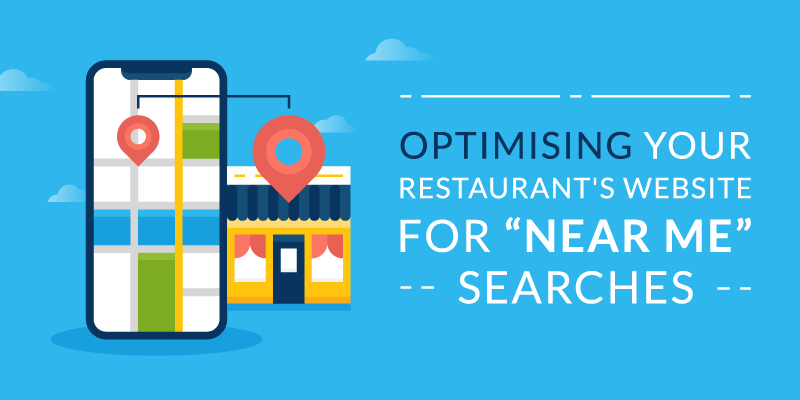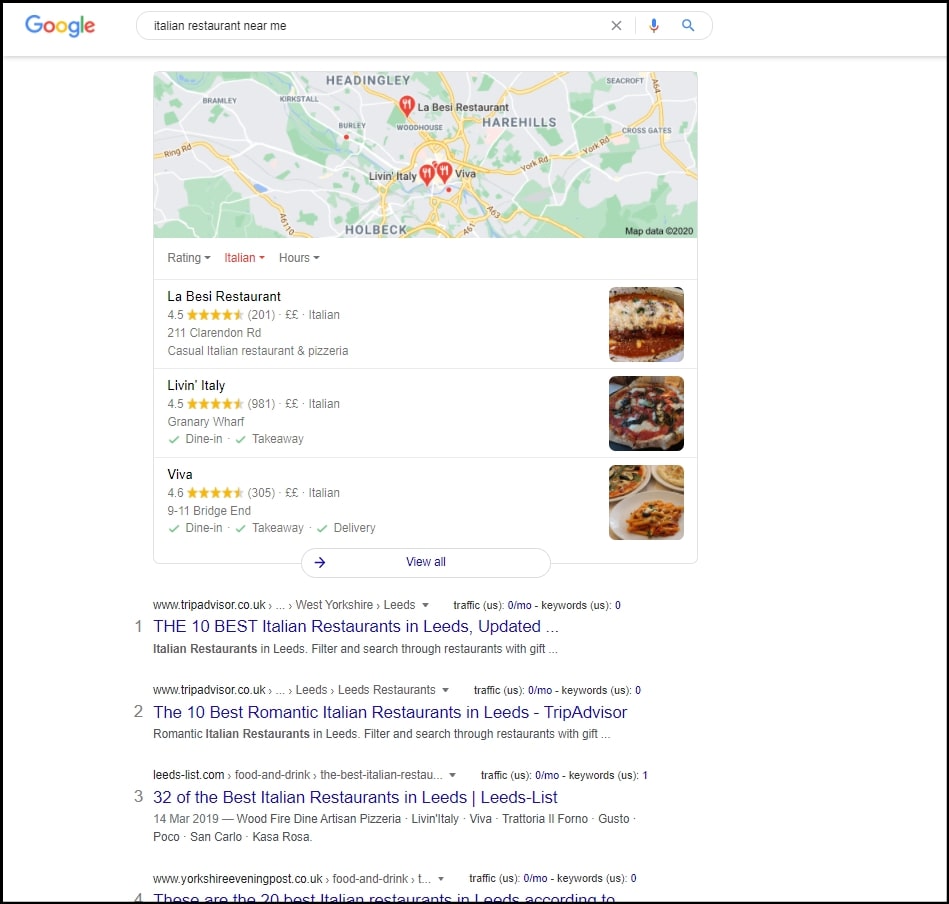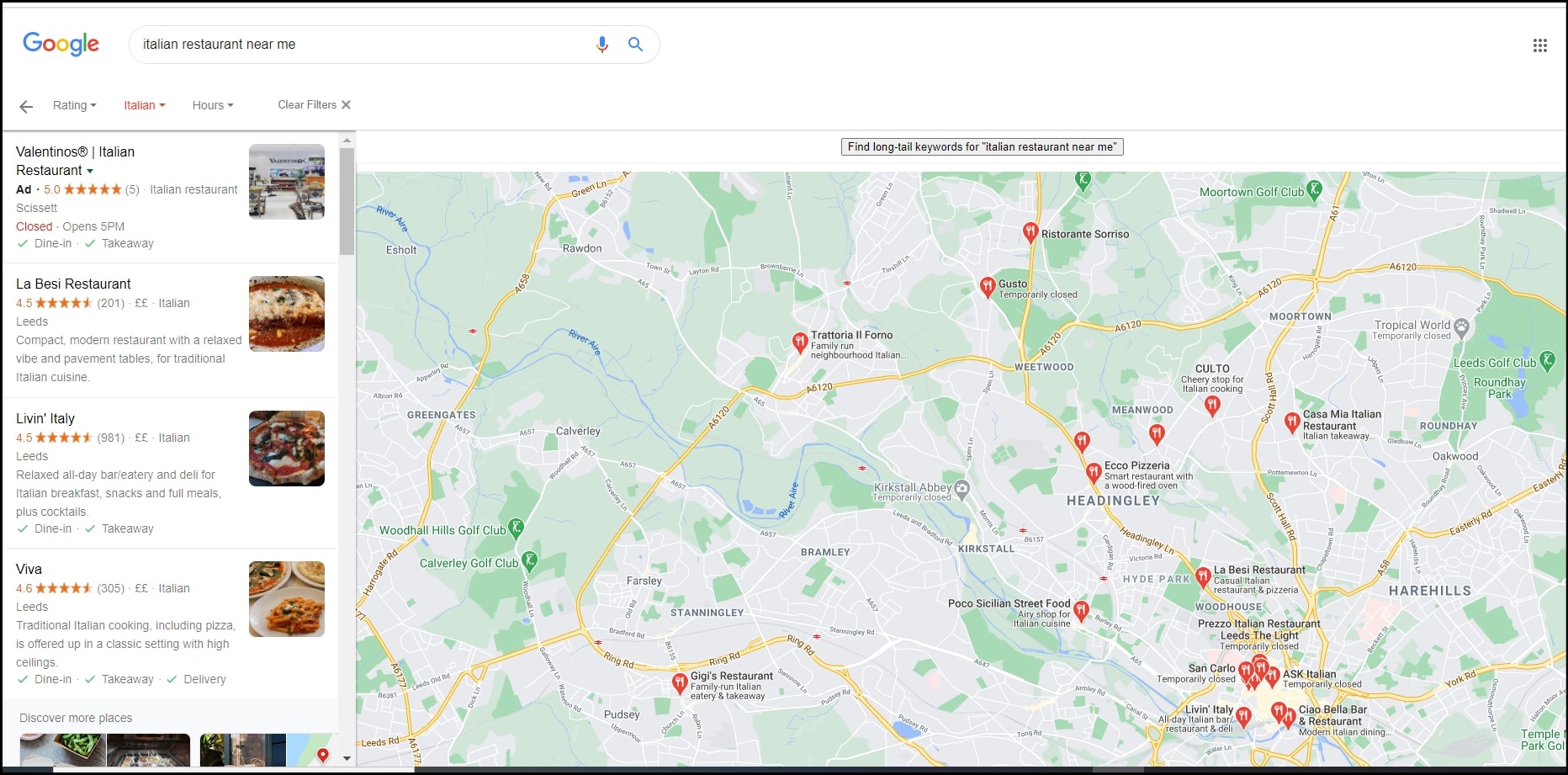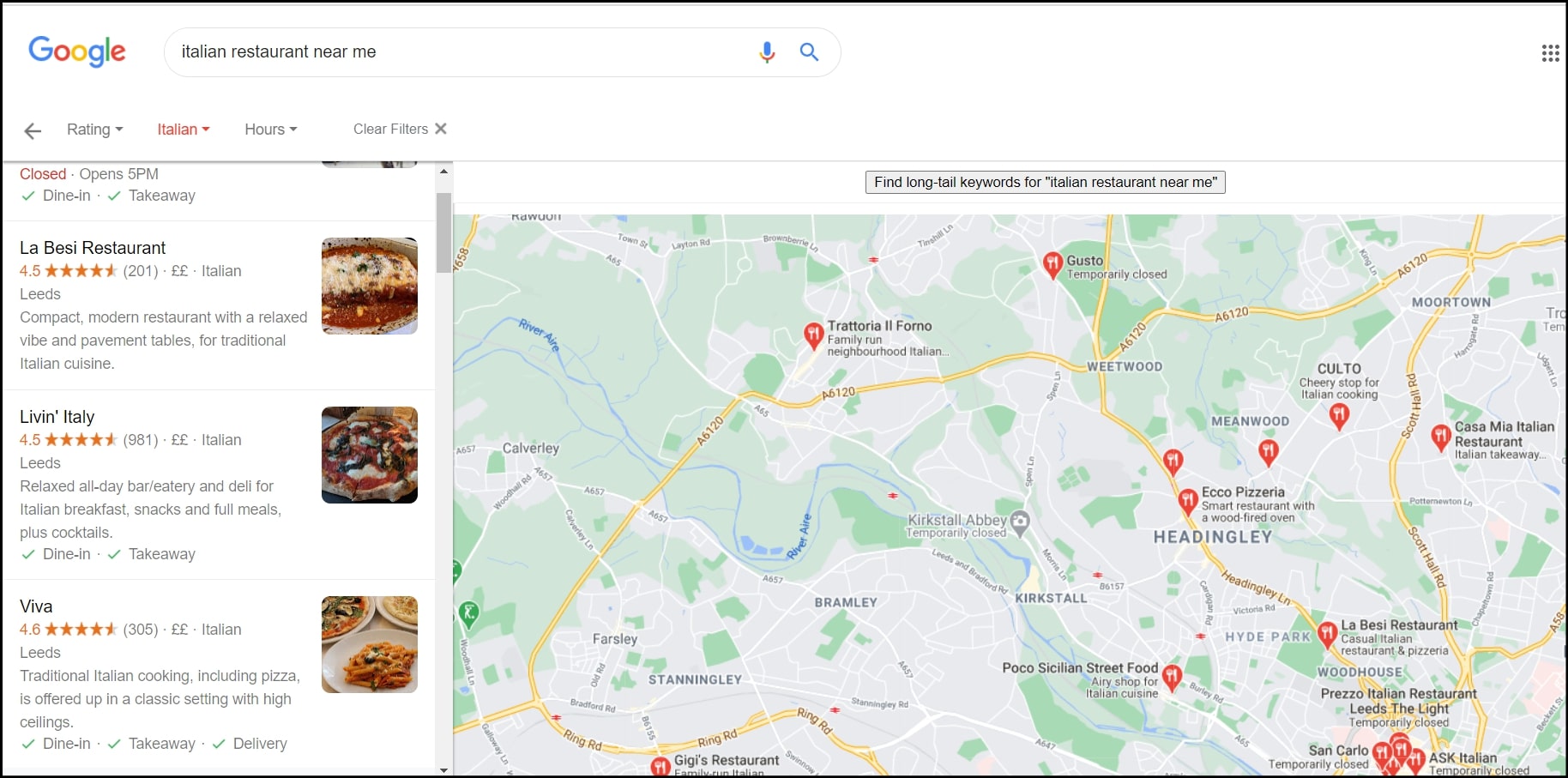
In the UK alone, the term “restaurant near me” is searched approximately 38,000 times. In addition to this, variations of this term, such as “Indian restaurant near me” and “Italian restaurant near me” have over 150,000 monthly searches between them.
The vast majority of people making these searches are doing so to find a local restaurant to go to, therefore ranking your restaurant for “near me” searches in your local area is one of the best ways to build a steady stream of new customers to your restaurant.
Below is a guide on exactly how to do this.
Table of Contents
How do “near me” searches work?
When someone makes a Google searched suffixed with “near me”, Google adjusts the results that it displays depending on the IP address of the user. This means that the results of the search are relative to the location where the search was made.
In addition to this location-dependency, Google also displays a map listing above the traditional organic results for many “near me” searches. This includes searches of “restaurant near me”.
Here is an example of the Google results for the search “Italian restaurant near me” (made in Leeds):

As we can see from these results, the Google Map and the three listed restaurants directly under the map get the lion’s share of space at the top of Google.
The top of the organic listing is dominated by independent lists of local restaurants on sites such as TripAdvisor. The websites of actual restaurants themselves only appear towards the bottom of the first page of Google, with the majority finding themselves on the second and third page.
The reason why the websites of actual restaurants appear so low on Google’s organic listing is that websites like Tripadvisor have built their whole business around gaining enough authority to outrank any independent restaurant.
Therefore, instead of trying to compete with restaurant directories and review sites, it is better to focus your energy on trying to rank in the Google Map and map listings.
There are three key variables that determine your position in the Google Map and map listings. They are:
- Your Google My Business profile
- Having complete and consistent citations of your name address and phone number
- The “click-through-rate” of your listing.
Let’s go through each of these in turn.
Optimizing your Google My Business Profile
The map that Google delivers when users make a “restaurant near me” search has local restaurants embedded into its relevant locations. You can see this in the image below:

These embedded features and the list to the left of the map are determined by the location listed on the restaurant’s Google My Business page. The list to the left of the map is a pull-through of the information listed on a restaurant’s Google My Business page.
There are two upshots of this fact:
- To compete at all in the Google Map your restaurant needs a Google My Business listing. If you have not claimed one for your restaurant you can do so here.
- As Google wants to give its users the most useful and informative results, Google My Business profiles that are completely filled out are given priority in the map listings over ones that are not.
Therefore, when you fill out your Google My Business profile, it’s well worth taking the time to fill out every available field. If this involves taking additional photos of your food and premises then do so. Any fields that are left empty by you, and that are filled out by your competitors, will put you at a disadvantage.
Adding fresh content to your Google My Business profile, such as using their post features and answering Google reviews, will also give you an advantage when it comes to ranking in the Google Map
Having complete and consistent citations of your name address and phone number
Although Google assumes your restaurant’s location based on the information listed on its Google My Business, the search engine “double checks” your location based on other citations of your restaurant’s name address, and phone number on the internet.
With sufficient citations, Google will start to see your restaurant as a specific entity, with all the instances of its name address, and phone number referring to the same thing.
Given that Google wants to be certain that is delivering correct information to its users, having a good number of these citations will give you a boost when it comes to visibility in the Google Map
The best places to create these citations are in local and industry-relevant directories such as Yell, Yelp and Zomato. Most of these platforms have fields for these three pieces of information.
Do not go overboard with this and create citations in places where they do not make sense, Google will simply ignore these citations when they are not relevant to the wider page.
It is also vitally important to ensure that your citations are consistent across all platforms. Google is not yet sophisticated enough to know that the addresses “141 King Street” and “141 King St” refer to the same place. Having these small inconsistencies can “confuse” Google as to where your restaurant is located. Again, given that Google does not want to show users incorrect results, it will reduce your restaurant’s visibility in the map listing if your location is not a certainty.
Improving your listing’s click-through-rate
Click-through rate (CTR) refers to how often your listing is clicked for a particular search compared to the other displayed listings. If your click-through rate is higher than the listed businesses around you, then this tells Google that your listing is a better result for a particular keyword than the others. Your listing will be given more visibility in the future as a result.
When exploring how best to improve your listing’s CTR its worth looking at what users can see when a listing is presented:

The first thing that will jump out to many users are the reviews. The number and average rating of each restaurant is given in the listing.
Having a high number of positive reviews is the best way to improve the CTR of your listing. Many people base their buying decision purely on which local restaurant has the highest number of positive reviews, so better reviewed restaurants get more clicks.
A second feature of these listings to notice is the tags at the bottom of each listing. For the bottom listing in the image “Viva” we can see that the tags are: “dine in”, “take away” “delivery”.
Using tags can increase your CTR because a portion of searchers will be looking for restaurants that fulfill the criteria that the tags specify. For example, if someone is looking specifically for a delivery restaurant, they are more likely to click on the listing which clearly states that they do delivery. Making your service as clear as possible will reduce friction when it comes to clicking on your listing.
What if I operate in multiple locations?
If you have a restaurant with multiple locations, you can create a Google My Business listing for each location and rank for “near me” searches when made in each area of operation.
An important factor to remember is that you cannot have multiple Google My Business listings that point to the same webpage. Therefore if you want to link your listing to your website (and you should do this) you need to make a separate page for each listing. This page should have some content unique to your area of operation to make it as clear as possible what areas you serve.
Author Bio: Oli Graham is the Marketing Manager for digital copywriting agency RightlyWritten. He has over 6 years working in digital marketing with particular expertise in content creation and PR

0 thoughts on “Optimising Your Restaurant’s Website for “Near Me” Searches”